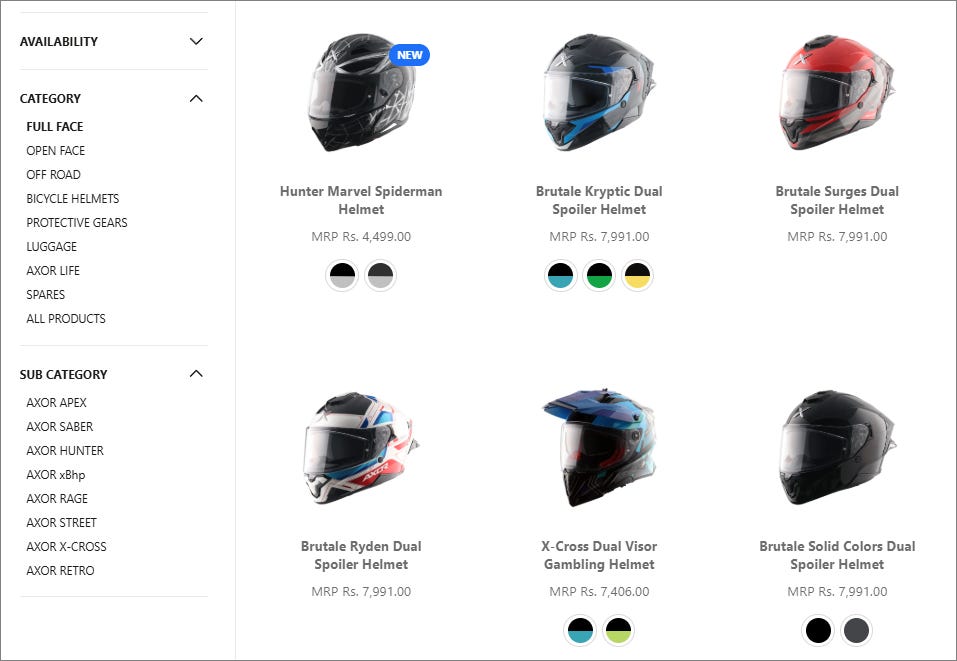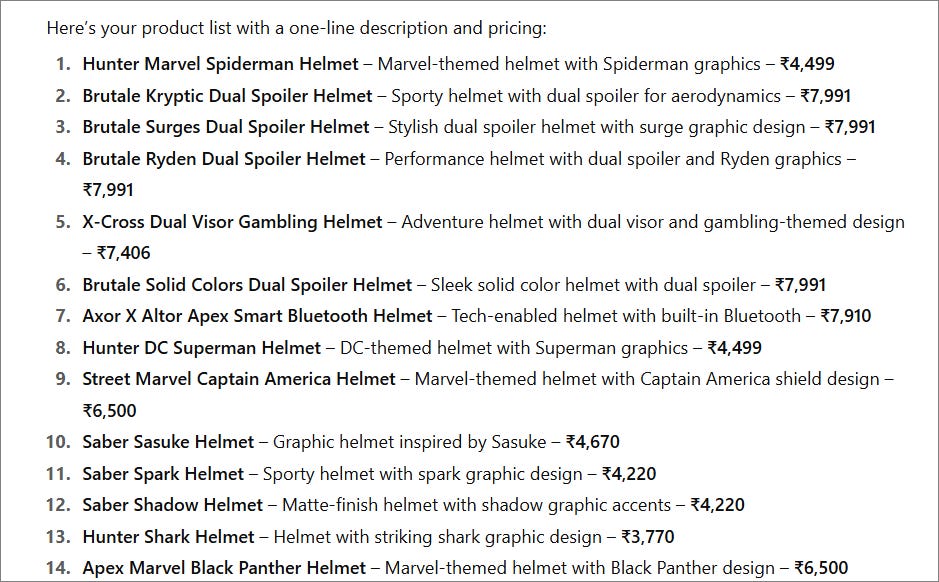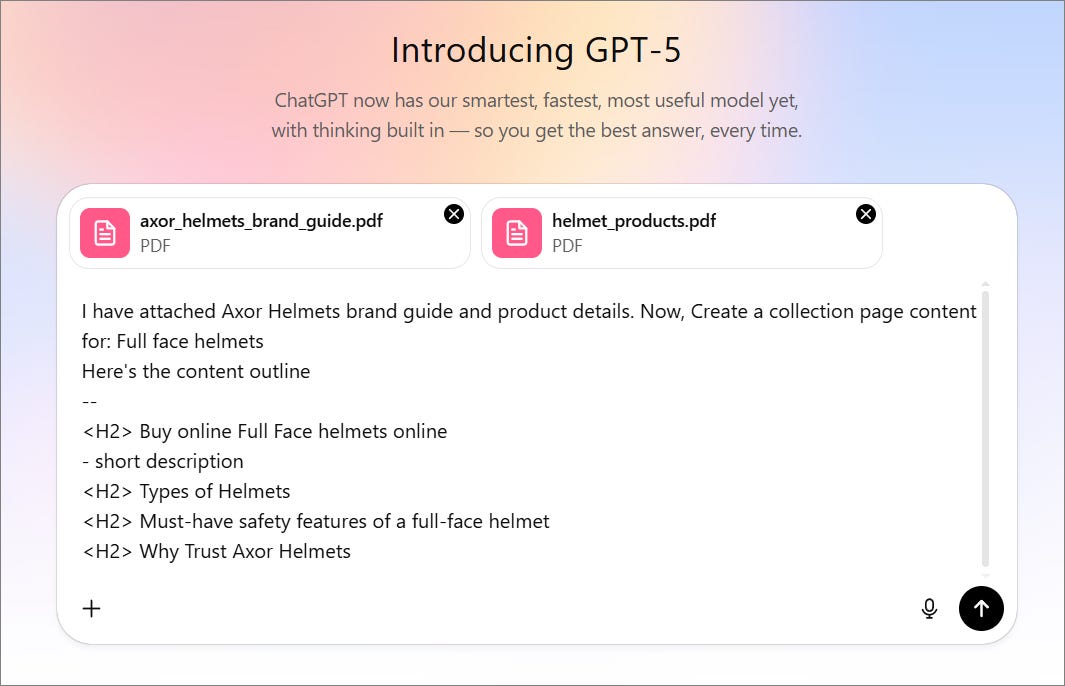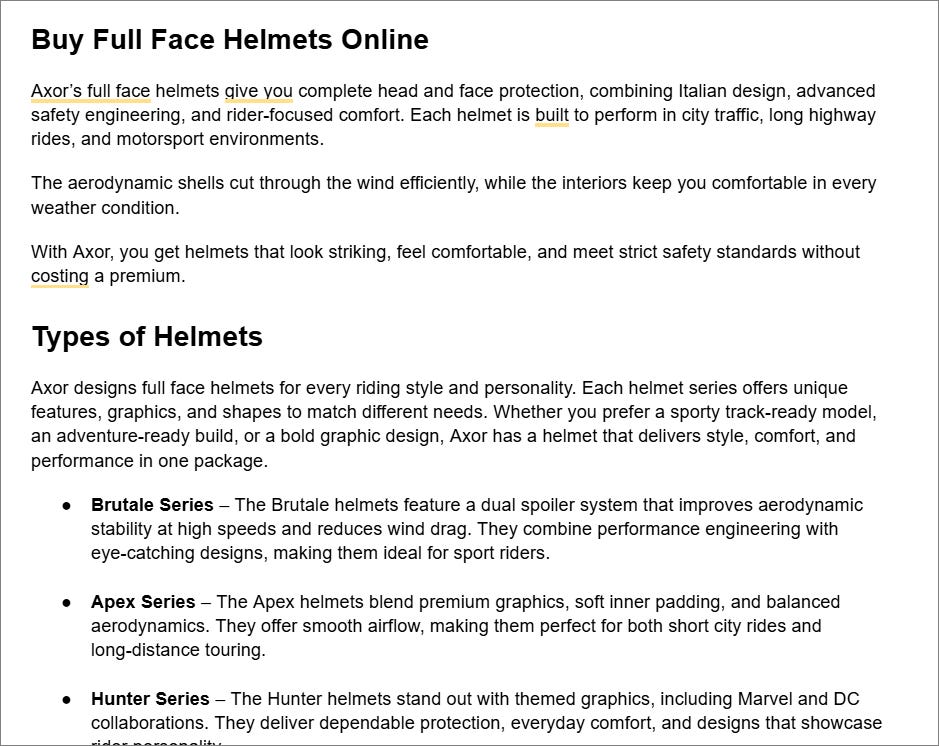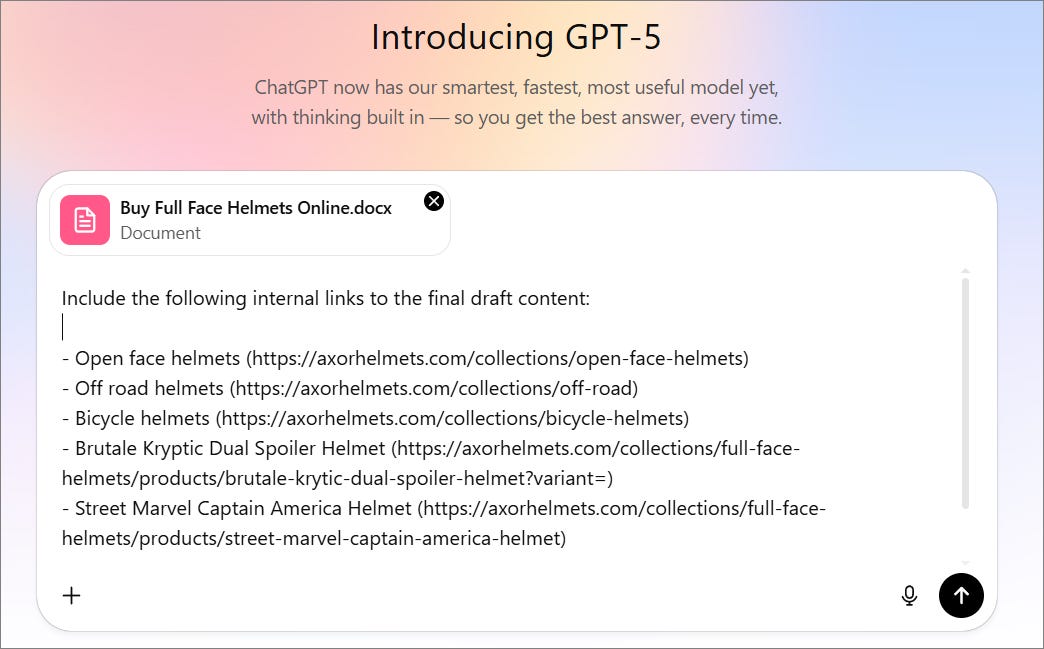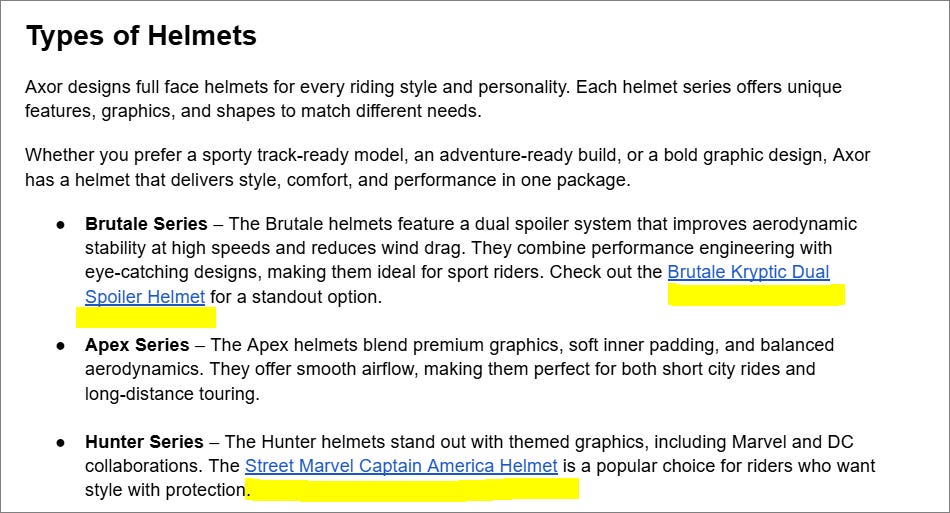✍️ Write ecommerce content using ChatGPT (4 Steps)
Automate your ecommerce content creation using ChatGPT
Many people create weak ecommerce content because they skip brand context. Without a brand guide, AI produces generic copy that doesn’t reflect your tone or positioning.
Another mistake is relying entirely on automation. AI can draft quickly, but without human review, it misses emotional appeal, product nuances, and persuasive details.
In fact, skipping product-specific features leads to bland descriptions, and ignoring SEO elements like internal linking and keywords makes it harder for the page to rank or convert.
Hey👋, Rafiqul from SEO Growth Notes. In this newsletter episode, I will show you how to create quality and personalized content for collection pages using ChatGPT.
Disclaimer: You cannot fully automate your content creation using this strategy.
To make it actionable, we will create category page content for this page (by Axor Helmets).
Step 1: Create a Brand Information Guide
The first step a professional writer takes before creating content for any brand is to understand what the brand does, its product offerings, unique selling points, and overall positioning. Likewise, you need to train your ChatGPT model about your brand.
To do this, create a brand information guide. Start by feeding brand details from the website into ChatGPT. This includes copying content from the
homepage
about page
awards page
contact page
and brand story page (if available).
The goal is to create a comprehensive document that has all the important information needed to position the brand correctly and make your content stand out.
After collecting the content, paste it into a Word document and upload it to ChatGPT. Then, use a prompt such as:
“Create a brand information guide for [brand name]. Ensure you list all important brand details, numbers, and differentiators.”
After pasting the content from various web pages, I created this brand guide:
Once the guide is ready, you can download it as a PDF or Word document.
Tip: Use this guide every time you create category page content so ChatGPT has the right context from the start.
Step 2: Add Product Details and Outline
Similar to the previous step, you also need to provide context about the products available under the specific category. This allows you to personalize the content at the page level.
In this step, copy the product names displayed on the category page and ask ChatGPT to learn about the product types. You do not need to share full product page details because, in most cases, the product titles are descriptive enough to give a clear idea.
For example, by looking at the product names, you might notice details such as:
Dual visor
Captain America style
Helmet with spoiler
These are small but important details you might miss if you simply ask ChatGPT to create content for the category without context.
Here’s the extracted product details I got from the collection page:
Along with the product details, you should also provide a rough idea of the outline. You can either give ChatGPT the outline yourself or ask it to create the outline along with the content.
Here’s a prompt example, where I pasted the brand document and product details along with the outline:
Step 3: Edit and Personalize the Draft
Once you have a draft from ChatGPT, refine it. Ask the AI to make the language more descriptive, use simple words, and keep sentences active.
Make sure it reflects the brand’s voice and includes product details naturally.
Then, read through the content yourself to confirm accuracy, improve flow, and add persuasive elements such as benefits, trust signals, and calls to action.
Here’s the first draft content I received using the previous prompt: Buy Full Face Helmets Online
Step 4: Add Internal Links
Internal links help with SEO and guide users to relevant pages. Identify URLs for subcategories or key products you want to promote.
In my case, I have selected the following related sub-categories and product links:
Open face helmets (https://axorhelmets.com/collections/open-face-helmets)
Off-road helmets (https://axorhelmets.com/collections/off-road)
Bicycle helmets (https://axorhelmets.com/collections/bicycle-helmets)
Brutale Kryptic Dual Spoiler Helmet (https://axorhelmets.com/collections/full-face-helmets/products/brutale-krytic-dual-spoiler-helmet?variant=)
Street Marvel Captain America Helmet (https://axorhelmets.com/collections/full-face-helmets/products/street-marvel-captain-america-helmet)
Now, I will ask ChatGPT to include these internal links in the final draft with relevant anchor text:
Here’s the final draft with internal linking:
Action items to write Ecommerce collection page content (AI + human editing):
Create a detailed brand information guide – Gather all key details from your homepage, about page, awards page, contact page, and brand story page. Feed this into ChatGPT to generate a clear brand guide you can reuse for every category page.
List and analyze product details – Copy the names of all products in the category and note unique features like design themes, visor type, or special functions. This helps ChatGPT create specific, accurate descriptions instead of generic text.
Prepare or request an outline – Decide the flow of your category page, including introduction, product highlights, and closing. Provide this to ChatGPT, or ask it to create one using your brand and product details.
Generate a draft and personalize it – Use ChatGPT to write the content, then refine it yourself to match your brand voice, improve readability, and ensure product details are woven naturally into the copy.
Add SEO-friendly internal links – Identify relevant sub-categories and product pages you want to promote. Then ask ChatGPT to insert these links with descriptive anchor text that fits naturally in the content.
Review for accuracy and engagement – Before publishing, check that all information is correct, the tone is consistent with your brand, the text is optimized for SEO, and the page encourages users to explore or buy.
Let's make SEO the biggest growth engine for your brand.
We started Accrue SERP with one clear goal— making SEO an outcome-based marketing channel (leads, signups, & conversions) rather than chasing site traffic that doesn’t add any business value to your bottom line.
Let’s schedule a 15 to 30-minute meeting to understand how we can help you achieve business growth with our outcome-based SEO services in India.




